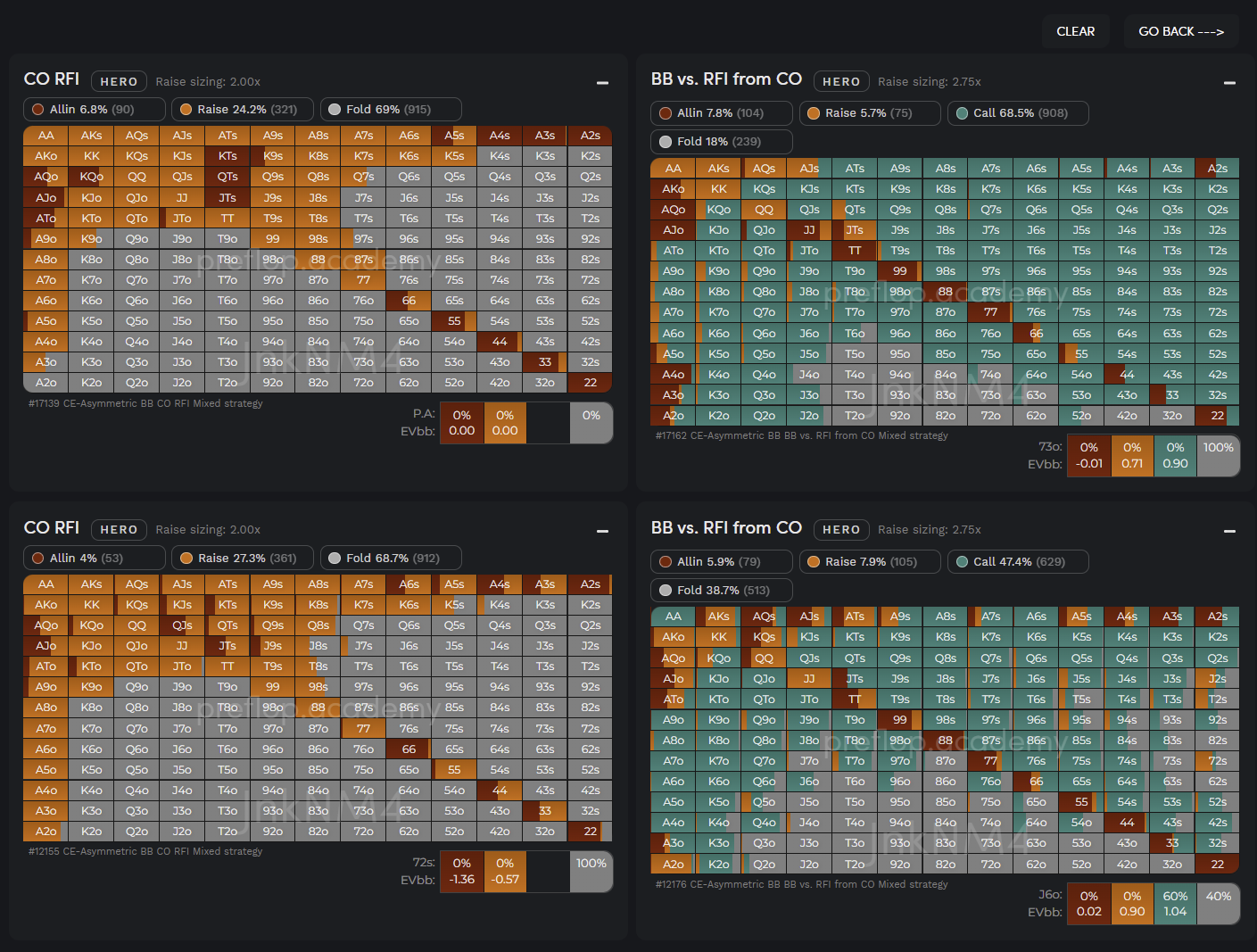Then, we have to investigate the asymmetric ones as well. This means that the effective stack will still vary under different circumstances.
Your success in poker will depend on your ability to understand how ranges change and apply that knowledge in-game. Poker.Academy, would help you improve your experience in these spots so that you can become more knowledgeable about preflop ranges, and explore the postflop streets after.
While making profitable postflop plays with incorrect preflop ranges is not confirmed to be impossible, I can assist you in enhancing your comprehension of preflop dynamics. Enhancing your knowledge of this subject will empower you to make more informed decisions in the future.
Let’s compare chipEV spots among symmetric and asymmetric stacks. This is the place to make a note here about asymmetric solutions, because if we take into account only the effective stack most often we would be wrong and more often the other stacks around are also different.
This is why there isn’t one single perfect solution because every scenario is different. Instead of memorizing charts, I like to look for patterns to understand why things are happening. For example, in this situation we might have 20bb versus 50bb from the big blind, or the opposite, while the other stacks at the table also change.
Let’s examine BB defend vs CO RFI at 22bb effective stack.
The upper stacks and ranges are as follows:The bottom part is related to:
You can see that, even with the same effective stack size of 22bb, the combinations we play from the big blind will differ depending on what everyone else at the table has, as well as the overall situation. I often use the Range Comparator feature to compare ranges in side-by-side and make the best study for my needs.
Subscribe to a plan now and gain access to numerous different spots on Poker.Academy.
The Trainer feature will give you instant feedback on your mistakes.
If we compare these same charts from the perspective of 22.5 big blinds and consider only symmetric chipEV models, this is what we see:
It is unnecessary for me to show you the obvious differences here, and my goal is to make you examine the relevant parameters. For example, compare Raise First In and look at how often BB is folding or calling in a in response. Additionally, examine percentages and count of combos – do you think they make a difference?
Take a broader view and ask yourself WHY this might be happening. Then, check another example and try to figure out any similarities that you could use the next time during real game situation.

Please tell me which areas you are finding the most differences in and also your thoughts.
Next, in Part 3, I’m going to explore the same scenario but in the ICM model. Until then, you could watch the ICM coaching with millennials.
